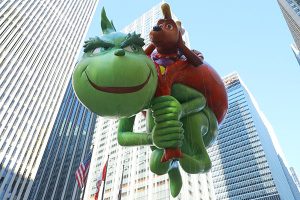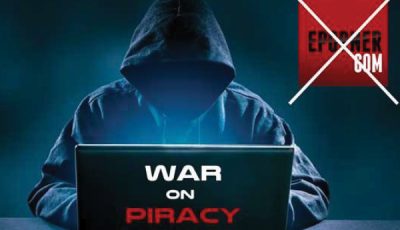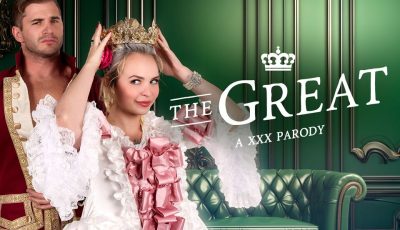Appeals Court Upholds Raunchy Play as Fair Use Parody of Grinch
 NEW YORK – In a ruling which affirms again the deference courts show to fair use claims involving parodic works, the U.S. Court of Appeals for the Second Circuit late last week issued a summary order upholding a lower court’s ruling that the play Who’s Holiday! “did not infringe on DSE’s (“Dr. Seuss Enterprises”) copyright and trademark interests in How the Grinch Stole Christmas.”
NEW YORK – In a ruling which affirms again the deference courts show to fair use claims involving parodic works, the U.S. Court of Appeals for the Second Circuit late last week issued a summary order upholding a lower court’s ruling that the play Who’s Holiday! “did not infringe on DSE’s (“Dr. Seuss Enterprises”) copyright and trademark interests in How the Grinch Stole Christmas.”
In applying the four factors of the fair use test, the court found all four favored the plaintiff, playwright Matthew Lombardo – and while every intellectual property lawsuit involving a fair use defense hinges on the facts of that individual case, there’s a lot to like in the court’s logic from the perspective of adult studios which make porn parodies of mainstream entertainment works.
“A ‘parody has an obvious claim to transformative value,’ as ‘it can provide social benefit, by shedding light on an earlier work, and, in the process, creating a new one,’” the court wrote in its order, quoting from the case Campbell v. Acuff-Rose Music. “Here, the district court correctly determined that the Play is a parody, imitating the style of the Grinch for comedic effect and to mock the naïve, happy world of the Whos. The first factor weighs in Lombardo’s favor.”
The court gave very little weight (or time) to the second factor of the four-prong fair use test, the nature of the copyrighted work, which under the terms of Campbell holds that “some works are closer to the core of intended copyright protection than others, with the consequence that fair use is more difficult to establish when the former works are copied.”
“The second factor is rarely useful ‘in separating the fair use sheep from the infringing goats in a parody case, since parodies almost invariably copy publicly known, expressive works,’” the court wrote. “The district court thus properly accorded this factor little weight.”
As for the third factor, the amount and substantiality of the portion of the original work taken by the parody, the appellate court echoed observations made by the Supreme Court concerning the difficulty – and danger – of applying this prong of the fair use test to parodic works.
“Parody presents a difficult case,” the Supreme Court wrote in Campbell. “Parody’s humor, or in any event its comment, necessarily springs from recognizable allusion to its object through distorted imitation. Its art lies in the tension between a known original and its parodic twin. When parody takes aim at a particular original work, the parody must be able to conjure up at least enough of that original to make the object of its critical wit recognizable.”
Ultimately, although it acknowledged Who’s Holiday! draws on a large portion of the original Grinch book in setting the scene for the progress of its own plot, the appellate court still found that “the Play’s use of material from the Grinch weighs in favor of finding fair use.”
“While the Play does use the Grinch’s characters, setting, plot, and style, it is in service of the parody,” the court wrote. “The Play does not copy verbatim or quote from the original book, and while it does recount the plot, it does so to invoke the original. Thus, the district court properly weighed this factor in Lombardo’s favor.”
In recent oral arguments heard by the Second Circuit panel, the judges seemed most open to DSE’s arguments with respect to the fourth factor of the fair use test, the effect of the use upon the potential market, both for the original work and for duly-licensed, derivative works. By the time court rendered its summary order, the judges clearly had concluded the potential effect of the parody on those markets is minimal.
“We agree with the district court’s analysis that there is little likelihood of harm to either market here,” the court wrote. “As the district court correctly concluded, each factor weighs in Lombardo’s favor, such that the Play is fair use of the Grinch.”
Finally, the court also considered the Seuss Estate’s argument that Lombardo had violated trademarks associated with the Grinch – and found those arguments lacking, as well.
“The district court properly granted judgment on the pleadings on the trademark counterclaims,” the court wrote. “Applying the balancing test set forth in Rogers v. Grimaldi… (Lanham Act “should be construed to apply to artistic works only where the public interest in avoiding consumer confusion outweighs the public interest in free expression”), it concluded that the public’s interest in free speech here outweighs DSE’s interest in protecting its trademarks. We agree.”
It is not clear at the time of this post’s publication if DSE will ask for a rehearing en banc from the full Second Circuit, or if that fails, petition the Supreme Court to hear the case.













